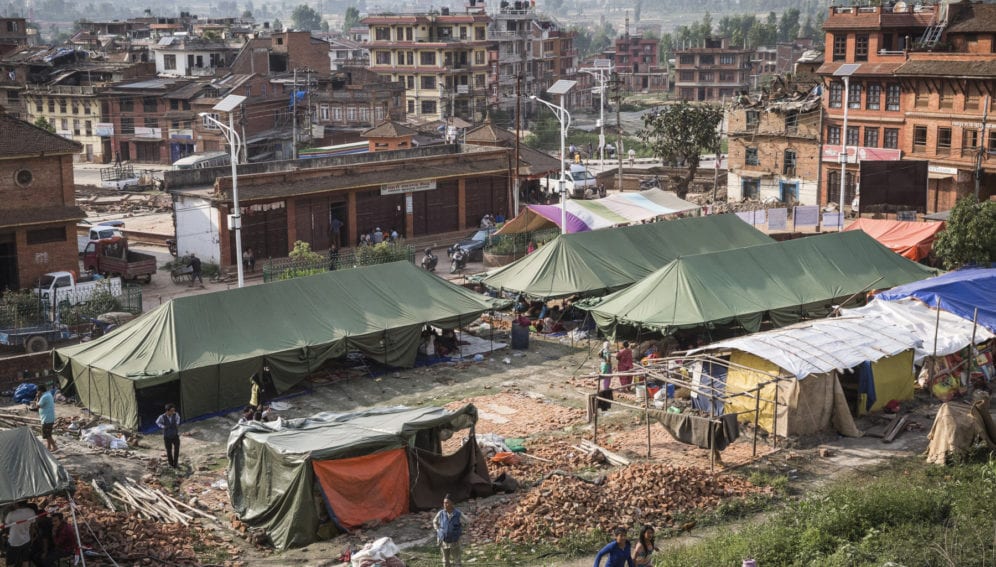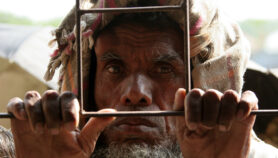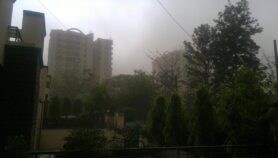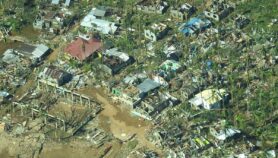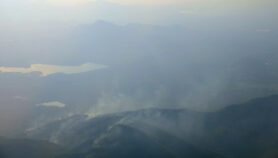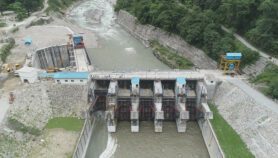By: Shahani Singh
Send to a friend
The details you provide on this page will not be used to send unsolicited email, and will not be sold to a 3rd party. See privacy policy.
[KATHMANDU] Nepal will manage its projected US$ 7 billion quake reconstruction plan on an online management system that limits the openness of data, says Shahani Singh
More than a month after two temblors — of magnitude 7.8 and 7.3 — hit this Himalayan country, leaving 9,000 dead and one in three survivors homeless, the government is setting up a transparent, online information management system capable of tracking international funds for reconstruction.
Efforts are concentrated on incorporating a ‘public dashboard’ into the existing Aid Management Platform (AMP), operated by the International Economic Cooperation Coordination Division of Nepal’s finance ministry.
The AMP, which has been visualising data on foreign aid projects in Nepal since 2013, is being geared to the Post-Disaster Needs Assessment Conference (PDNA) on 25 June when multilateral and bilateral donors are expected to pledge funds for reconstruction — officially estimated to cost US$ 7 billion over five years.
“The PDNA will inform the conference discussions, particularly on the scale of the devastation and the magnitude of our needs to recover,” says Nepal’s finance minister Ram Sharan Mahat in a World Bank blog. “More importantly, the conference will help us articulate a widely owned vision for reconstruction and strategies to plan and prepare better for risks, hazards and vulnerability."
“It (AMP) can show where funds are going at a more granular level,” says Dustin Homer, who manages the AMP and also Development Gateway, a non-profit that offers information solutions for international development work.
The AMP with its machine readable and visualised data is capable of showing how much of a project's funding is going to each district and make comparisons with projects in other districts.
“One of the positive outcomes of the AMP is that it has increased and improved donor interaction with Nepal’s ministry of finance, because once the information is made public, donors can give feedback to the ministry of finance, and vice versa, enabling a dialogue on fund allocation and accuracy of information,” says Homer.
Limitations
There are limitations. “What the AMP doesn't tell us is exactly how a particular ministry has allocated funds between district development centres or between village development committees that form the administration in Nepal's local government,” Homer tells SciDev.Net.
“This is one of the biggest challenges — there definitely isn't any aggregated information about those expenditures, except what we get in the government expenditure report,” Homer adds.
A 2014 study that explores the emerging impacts of open aid data and budget data in Nepal notes that data in the government's budget, while made available to the public, exist in closed formats that do not enable re-use or analysis in order to be defined as 'open'. Poor internet connectivity at local levels adds to the problem.
Tracking and analysis of donor funds for the Nepal earthquake have thus far only been possible at the top level of disbursement. Analysis of government funds from the national budget still requires scraping up raw data that can be turned into information for public consumption.
Open data
"The open data model in its current form does not deliver for the global south. There are huge amounts of data in machine readable format, but how many civil servants or civil society at the local level in Nepal can use it?" asks Pranav Budhathoki, chief executive officer of Local Interventions Group (LIG), a non-profit company working for open government in developing countries.
In collaboration with Accountability Lab, a non-profit that focuses on accountability for reform, LIG has attempted to fill the gap between relief funds pledged at higher levels of governance and needs on the ground, by mobilising teams of district coordinators and volunteers manning 'Mobile Help Desks'.
“LIG has unfettered access to information from government agencies which is communicated to district coordinators. The coordinators are able to check with local government officials while volunteers record urgent needs through a hotline and an SMS platform. This model completes the information loop and attempts to reach the last mile where funds should flow,” explains Budhathoki.
Human intervention in the open data model enables accountability through a simple, non-technical package, according to Budhathoki.
"Open data in the global south should be about appealing to the least common denominator — the relief and reconstruction needs of the people," says Budhatoki. "Technology is just a means to this end — it should not be everything."
This article has been produced by SciDev.Net's South Asia desk.


